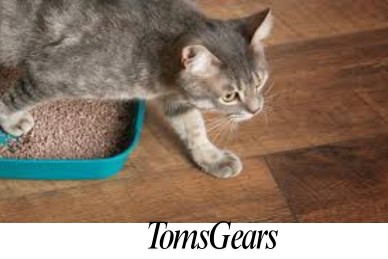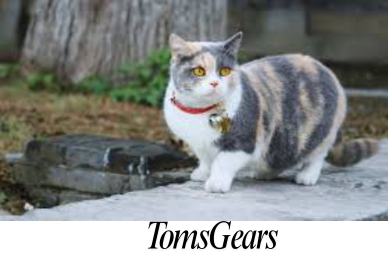Where Can I Declaw My Cat for Free?
Declawing a cat, medically known as an onychectomy, is a surgical procedure that involves the removal of a cat’s claws and part of the bone that the claw is attached to. This is a permanent alteration to a cat’s paws and comes with significant risks.
Before even considering where you can declaw your cat for free, let’s take a closer look at what this procedure entails, why it’s controversial, and what alternatives exist. Remember, your veterinarian is the best resource to consult when deciding on any treatment for your pet.
Should You Declaw Your Cat?
Declawing is not as simple as trimming a cat’s claws. In reality, it is a painful and invasive surgery that involves amputating the last bone of each toe on a cat’s paws. Not only does this surgery remove the claws, but it also fundamentally changes the way the cat walks and uses its paws.
Declawed cats often face a range of complications, both immediately after the procedure and later in life. Studies show that declawing can lead to chronic pain, lameness, and arthritis as the cat ages. Cats rely heavily on their claws for balance, self-defense, and marking territory, and removing them disrupts their natural instincts.
The American Veterinary Medical Association (AVMA) and other organizations such as the Humane Society and PETA have expressed strong opposition to declawing. Several countries, including the United Kingdom, Australia, and much of Europe, have banned declawing entirely. In the United States, certain cities and states, including New York, have passed laws that make declawing illegal unless medically required.
Alternatives to Declawing
If you’re considering declawing your cat, it’s crucial to explore other options first. Several alternatives can effectively address issues like destructive scratching without resorting to a procedure that can negatively affect your cat’s well-being.
Training and Behavioral Modification
One of the most effective ways to manage your cat’s scratching is through training. Cats scratch to mark their territory, stretch their muscles, and maintain their claws. Providing the right outlets for this natural behavior is key.
Using positive reinforcement techniques can encourage your cat to use appropriate scratching surfaces like scratching posts or pads. Introduce vertical or horizontal scratching posts, depending on your cat’s preference, and place them near areas where the cat has shown interest in scratching. Reward your cat with treats and affection when it uses these designated areas.
Environmental enrichment can also play a significant role. Adding cat trees, toys, and interactive playtime can reduce a cat’s urge to scratch furniture and other surfaces. Cats who are mentally and physically stimulated are less likely to develop destructive habits.
Regular Nail Trimming
Regularly trimming your cat’s nails can also prevent excessive scratching damage. You can purchase cat-specific nail clippers from pet stores, and many veterinarians or groomers offer nail trimming services. While it may take some time for your cat to get used to the process, consistent trimming can significantly reduce the impact of scratching.
Experts recommend trimming your cat’s nails every 1 to 2 weeks to keep them short and blunt. Doing this can save your furniture and reduce the temptation to resort to declawing.
Soft Paws and Nail Caps
For a non-invasive solution, you can use Soft Paws, a brand of adhesive nail caps that fit over a cat’s claws. These caps prevent damage from scratching while allowing the cat to retain its claws. Soft Paws are easy to apply and last about 4 to 6 weeks before needing to be replaced.
Other similar products, such as sticky paws (adhesive strips) or soft plastic caps, work in the same way. These alternatives offer a practical and humane option for managing scratching without permanently altering your cat’s paws.
How to Find Free or Low-Cost Declawing Options
It’s incredibly rare to find free declawing services, and for good reason. The procedure itself is costly and requires anesthesia, surgical expertise, and follow-up care. However, some low-cost options might exist, though it’s important to question whether the procedure is in the best interest of your cat.
Animal Shelters and Rescue Organizations
Some animal shelters and rescue organizations may offer discounted or even free veterinary services for low-income pet owners, but these programs are more likely to focus on essential care, such as spaying or neutering, vaccinations, or emergency surgeries. Declawing is often excluded from these services because of the ethical debate surrounding the procedure.
To explore this route, contact local animal shelters and inquire whether they offer any veterinary assistance programs. You may also be able to find organizations that provide low-cost veterinary care for qualifying families. For example, The Feline Veterinary Emergency Assistance Program (FVEAP) assists with emergency medical expenses, though it is unlikely to cover elective procedures like declawing.
Veterinary Clinics and Hospitals
Some veterinary clinics and hospitals offer sliding-scale fees or payment plans for low-income pet owners. These programs may reduce the cost of necessary surgeries, but again, declawing is rarely included unless medically required. It’s still worth asking your local clinic whether they provide any discounts or payment options that could make the procedure more affordable.
Non-Profit Organizations and Grants
While few animal welfare foundations or charities specifically cover declawing, some non-profits help with general veterinary costs. Organizations like The Pet Fund or RedRover offer financial assistance to pet owners struggling to cover medical bills, though they are more likely to support life-saving treatments rather than elective surgeries like declawing.
Additional Considerations: Laws and Regulations
Before pursuing declawing, it’s important to research your local laws. In the United States, several states and cities have either banned or heavily restricted the procedure. New York, for instance, became the first state to pass a law banning declawing in 2019, and other cities like Los Angeles have also outlawed the practice.
These restrictions are largely driven by concerns over the unnecessary pain and risks associated with declawing. Checking your local regulations is crucial to ensure you’re not seeking a procedure that may be illegal in your area.
How to Get Financial Help for Pet Surgeries
Although declawing is unlikely to be covered by most financial assistance programs, pet owners can explore other options to manage medical expenses for their cats. Here are some potential sources of financial help:
- Pet Financial Assistance Programs: Look into organizations that assist with veterinary bills, like The Pet Fund or Brown Dog Foundation. Keep in mind that these programs are usually reserved for urgent, life-saving surgeries and may not apply to declawing.
- Pet Insurance: Most pet insurance plans do not cover elective surgeries like declawing. However, if the procedure is deemed medically necessary, insurance might help cover part of the cost. Be sure to read the fine print of your policy.
- Crowdfunding: Many pet owners have turned to crowdfunding platforms like GoFundMe or Waggle to raise money for their pets’ medical needs. This can be a viable option for pet owners who need financial assistance but are unable to qualify for traditional aid programs.
Wrapping Up
Declawing is a serious surgical procedure with significant ethical, legal, and health considerations. While some cat owners may initially consider it as a solution to behavioral problems, it’s important to explore the numerous alternatives that exist. If you are still considering declawing, make sure to consult a veterinarian and carefully weigh the pros and cons. In most cases, declawing is not recommended and may even be illegal depending on where you live.






